Northern Lights dazzle skies across Northern Ireland
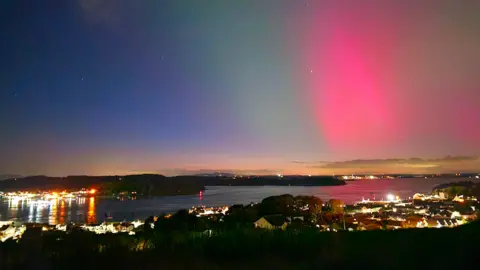 Cara/BBC News NI Weather Watcher
Cara/BBC News NI Weather WatcherStargazers have been able to witness the Northern Lights on Thursday night, after the Met Office predicted a strong chance of the aurora being visible in Northern Ireland.
Due to increased solar activity, the atmospheric conditions were ripe for this awe-inspiring natural phenomenon, offering locals a chance to experience the stunning lightshow close to home.
The Northern Lights,also known as the aurora borealis,are vibrant light displays that occur in the sky, usually near the polar regions.
The lights are created when charged particles from the sun, known as solar winds, collide with gases in Earth's atmosphere.
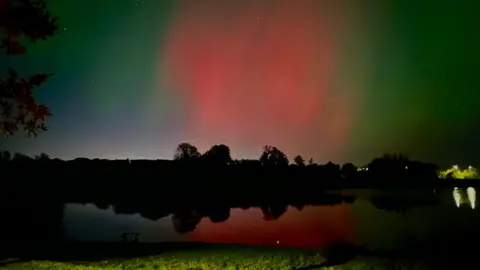 JA/BBC News NI Weather Watcher
JA/BBC News NI Weather Watcher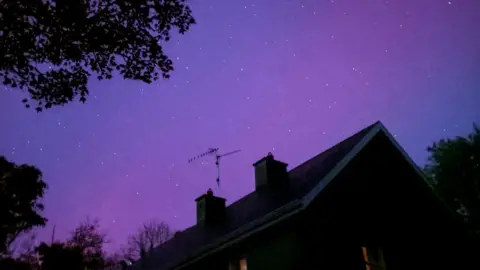
Why are sightings more frequent?
Thursday's aurora camejust days after a similar display,which was caught on camera across Northern Ireland.
Numerous sightings have been reported throughout 2024, marking a year of frequent auroras in regions not usually accustomed to them.
According to the Met Office, this is likely helped by the sun's "solar cycle", a natural 11-year cycle of activity.
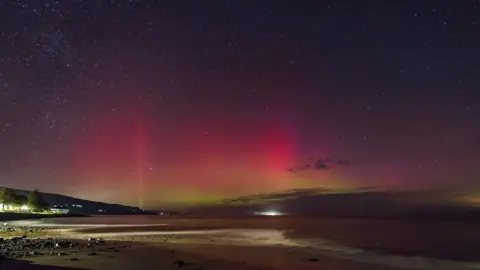 Ian McIlroy/BBC News NI Weather Watcher
Ian McIlroy/BBC News NI Weather WatcherKrista Hammond, Met Office space weather manager, said: "The sun goes from solar minimum, where we see very few sunspots, to solar maximum, where we see the most.
"Sunspots are responsible for solar storms, which create the Northern Lights.
"As it is now, we are at what is expected to be the solar maximum, so we are seeing a lot of sunspots and more frequent auroras."
With Northern Ireland’s proximity to the northern horizon and the current solar maximum, residents have been fortunate enough to enjoy these rare displays on multiple occasions this year.
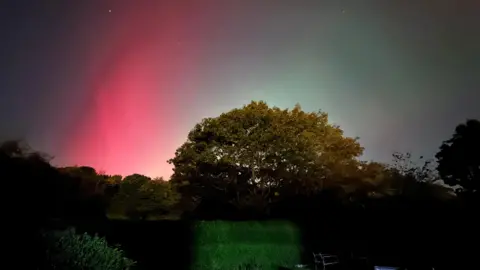
However, it is worth noting that more often than not, the more vivid lights can only be observed through cameras, including those many of us have on our smartphones, and not with the naked eye.
"You can definitely see the aurora with the naked eye, including all of the various colours", according to John Fagan who runs popular Facebook page, Irish Aurora Chasers.
"I've seen all of the colours without any equipment, but you need to make sure you are away from any light pollution for the best chance of seeing the lights."
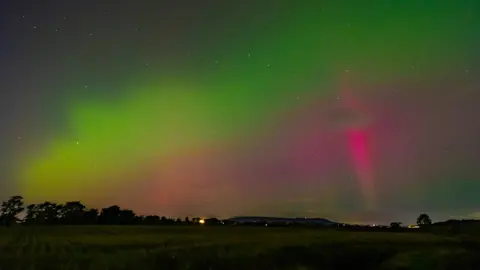 Ciaran Kelly/BBC News NI Weather Watcher
Ciaran Kelly/BBC News NI Weather Watcher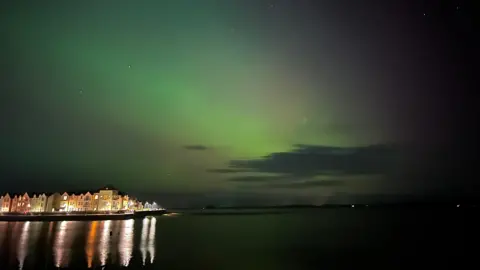 Curtis/BBC News NI Weather Watcher
Curtis/BBC News NI Weather WatcherThe reason for Thursday night's heightened chance was due to a geomagnetic storm caused by a burst of solar energy reaching Earth's atmosphere.
This type of solar event can supercharge the auroras, making them visible at lower latitudes than usual.
Did you snap a good photo of the Northern Lights in Northern Ireland on Thursday night?You can upload your image to the BBC Weather Watchers website.
